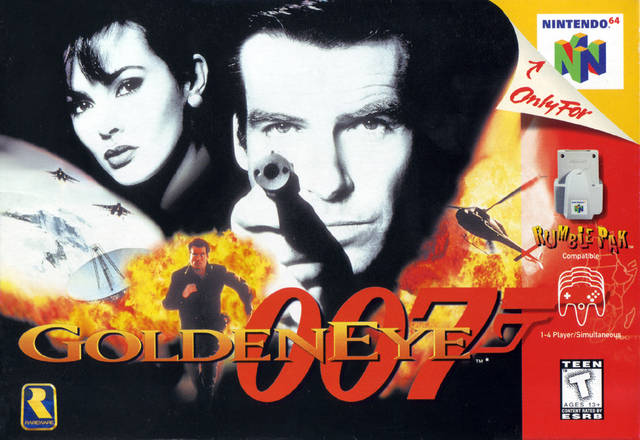GoldenEye 007 dev on the game’s development, Miyamoto wanted the killing toned down
Posted on October 26, 2015 by Brian(@NE_Brian) in General Nintendo, News
While speaking at the GameCity festival in Nottingham, co-designer Martin Hollis opened up about the development of GoldenEye 007. A number of interesting tidbits were shared, including Shigeru Miyamoto’s interest in turning down the killing – including close-up killing.
If you’re interested in reading up on the full report from Hollis’s talk, head past the break. You can also check out The Guardian’s article here.
– After several approaches, Genyo Takeda (Punch-Out!!) director finally visited Rare
“He went back to his hotel room, and when he came back for more meetings the next day, Rare had made a new version of Punch-Out!! over night, using their Silicon Graphics workstations and featuring huge rendered sprites. I imagine it impressed him a great deal.”
– Rare was given the opportunity to make a GoldenEye game after making Killer Instinct
“Tim Stamper told me to write a design document. So I went away and thought about it for a month and wrote a ten-page document. And then I was making GoldenEye.”
– Was originally much more graphic in its depiction of violence.
“Bond is a violent franchise and making that fit with Nintendo, which is very much family-friendly, was a challenge. For a while we had some gore, it was just a flipbook of about 40 textures, beautifully rendered gore that would explode out. When I saw it the first time, I thought it was awesome, it was a fountain of blood, like that moment in the Shining when the lift doors open. Then I thought, hmm, this might be a bit too much red.”
– Nintendo was apparently concerned about the violence
– Towards the end of development, the team received a fax from Shigeru Miyamoto, with a series of suggestions for the game
“One point was that there was too much close-up killing – he found it a bit too horrible. I don’t think I did anything with that input. The second point was, he felt the game was too tragic, with all the killing. He suggested that it might be nice if, at the end of the game, you got to shake hands with all your enemies in the hospital.”
– Hollis instead added a credits sequence into the game, introducing all the characters, almost as though they were being portrayed by actors.
“It was very filmic, and the key thing was, it underlined that this was artifice. The sequence told people that this was not real killing.”
– The team also borrowed the idea of having multiple objectives on each level from Super Mario 64
“I studiously tried to learn what Nintendo was. I played [Zelda] Link to the Past from beginning to end – I got all the hearts and all but two of the quarter hearts. I could write a 1000 pages about that game. Then Mario 64 came out during the development of GoldenEye and we were clearly influenced by that game. Ours was much more open as a result.”
“I value the idea – which I do see as quite strongly a Japanese idea – of respect to the player and trying to see into their mind and their life,” he said. “We have jargon for it nowadays: ‘user-centric design’. Nintendo thought about where the player would be when they played the game and who would be with them at the time.”
– Hollis argued that Nintendo also respects the creators, even when it might be financially detrimental
– Rare was asked if it would consider making a game based on the next James Bond film, but the studio turned it down
“I thought about this and was not sure I’d really want to. We had a small chat, three or four of us on the team. It was like, ‘No’. We sent the message back, ‘The answer is no. We don’t plan to make another Bond game from another Bond film’. And that was it.”
– Hollis is still surprised at how easily Nintendo accepted their refusal
“It must have grossed, I don’t know, $400m or something. You might’ve thought that on a commercial basis someone at Nintendo, even lower down or higher up or whatever, would’ve said, “Well, are you sure?”, but out of respect for the creator and the importance of the people who actually made the game, that was it.”
– Perfect Dark was “definitely a spiritual sequel”
“I wanted to make a game that starred a woman. Partly it was Nikita, the film by Luc Besson, and also Dishonored, a 1930s movie starring a spy who was a woman, and a general sort of sensibility that I thought it would be interesting to have a woman be the centre of attention. We constructed this character, to the very best of our ability, to be the centrepiece of the game.”
“It’s very tough in a first-person shooter to develop a personality or a backstory, and what Bond brings you is honestly a lot more. You hear the theme tune and you’re right there.”
– How Nintendo managed to maintain its brilliance as a game development studio: “the secret of Nintendo is simple: always do good games”.
